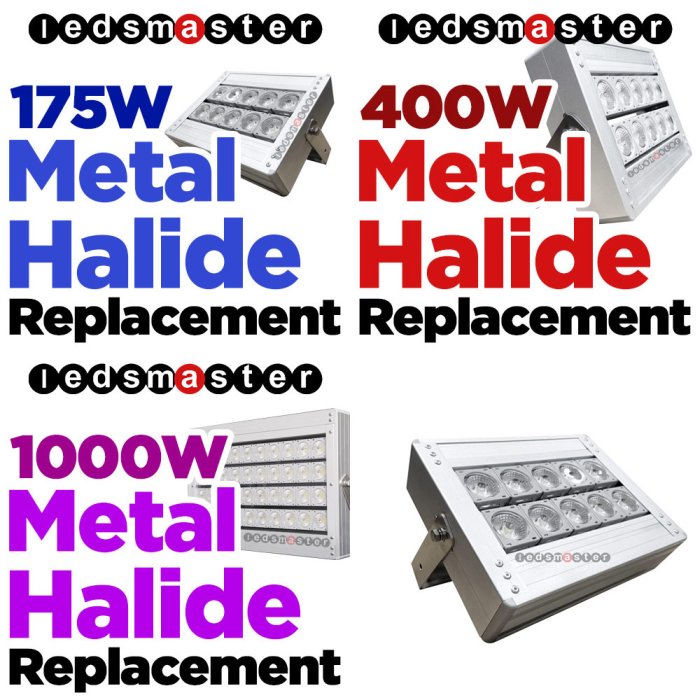
The number of people starting to make the comparison between LED and metal halide is on the surge. They are high power flood lights that are suitable for large area illumination. For instance, parking lot, airport, sports stadium, ball field, warehouse, factory and more. With the advancement of technology and time goes by, many contractors start to compare the difference between MH and LED.
LED vs Metal Halide comparison #1 – working principle
They use vastly different to produce illumination. For the LED lights, current passes though the semi-conduction and then electrons get into the holes (protons). It causes electron falls from high energy to lower energy level. The energy gaps between these two levels become the photon, which is in the state of light. With the use of different semi-conductor, we can produce illumination having different colors (wavelength). It is because the wavelength depends on the gap size between two energy level of electron inside LED lights.
As for the working mechanism of metal halide, a sudden high voltage is applied to ionize the mercury vapor mixture inside the arc tube. Once there are enough medium for electricity conduction, it can start to light up. We need a device ballast to contact the starting and operating voltage & current.
Comparison #2 – energy saving is different between LED and Metal Halide
LED has higher energy efficiency than metal halide. To compare this parameter, we need to know what is lumen. Lumen (lm) is a unit indicating brightness. It is like the horse power of a car. Higher the horse power high the speed. Similarly, the luminaries having higher lumen means that they can produce brighter light. MH has lighting efficiency of 65-80 lm/W, while LED has 120-140 lm/W. So, you can see the lumen per watt of LED is about a double of metal halide. The energy consumption difference between LED and metal halide can be 50% while having the same brightness. Therefore, it is beneficial to replace your metal halide to LED.
Comparison #3 – life span & maintenance rate
Have you ever experienced MH goes off so quickly, within 2 to 3 years. Metal halide and LED has life span of about 5,000 hours and 80,000 hours respectively. If you have LED replacement for MH, your new luminary can last for about 30 years if you operate them for 7 to 8 hours per day. You will only feel there is observable decrease of brightness after 80,000 hours. Longer life span meant that the lesser repair for LED lights. Apart from this, we have another factor that is LED versus metal halide.
Comparison #4 – harmful Ultra Violet radiation in metal halide
The spectrum of LED and metal halide are different. Since MH use mercury vapor to emit illumination, the light will contain broader range and uncontrolled light spectrum. The visible and functionable wavelength is 400 nm to 700 nm; however, MH lamp can produce lights having wavelength higher than 700 nm, which falls within the UV region. According to the studies, UV is cancerous and irritate our eyes. Although some manufacturer will add the absorption coating on Ultra Violet light, we cannot ensure that 100% of them are eliminated. Instead, with the use of LED over MH, we can selectively allow and control specific wavelength. We can allow a very precise color and wavelength of light.
Especially for color changing LED lights, we can manipulate the colors easily. MH lamps do not have this feature as well. For the light emitting diode, we can have various color temperature, from 2800K to 7500K. For the general use, 5500K is the most common.
If you would like to buy our products of LED flood lights to replace metal halide, you can send us an email at beatus@ledsmaster.com